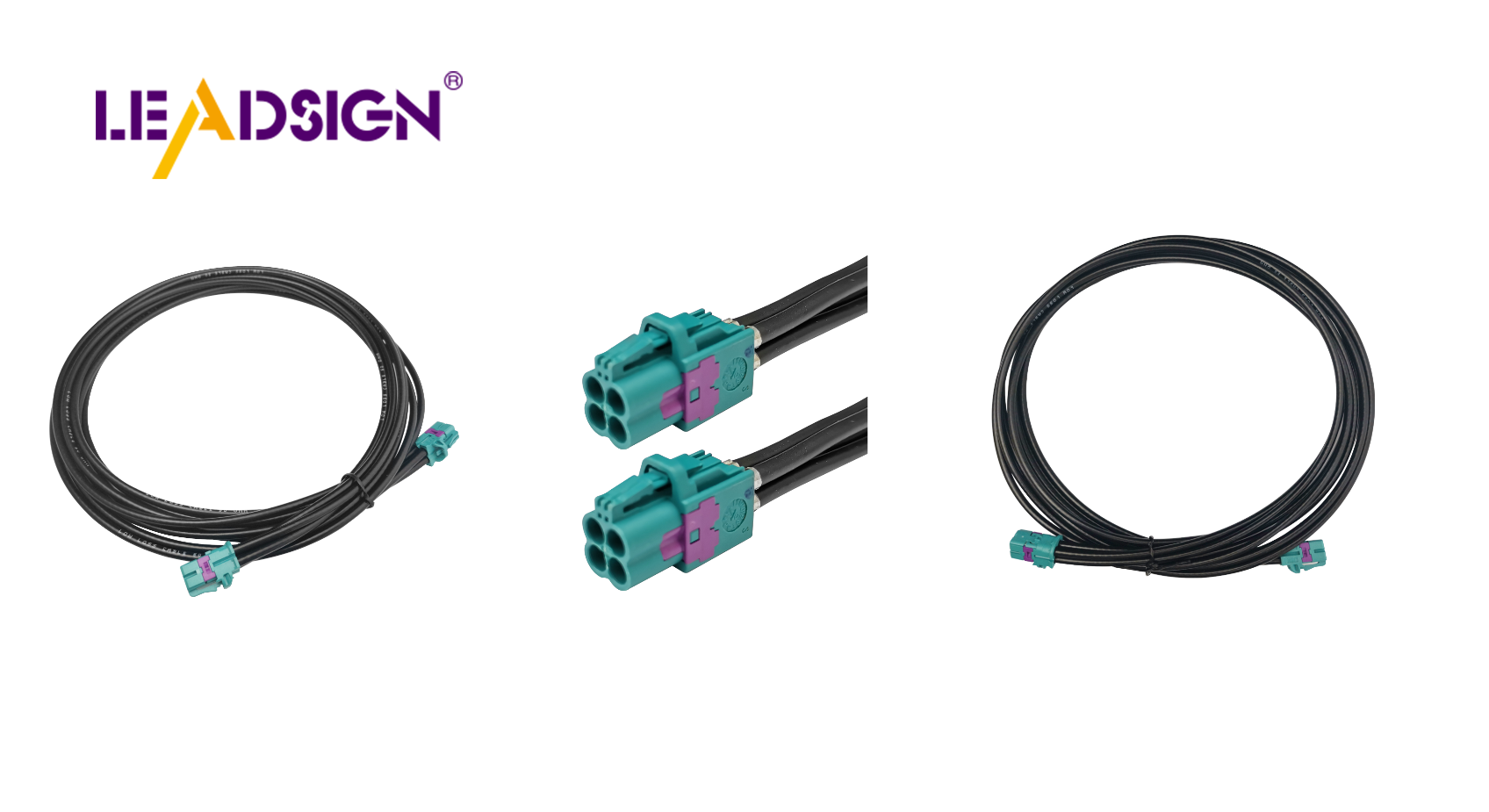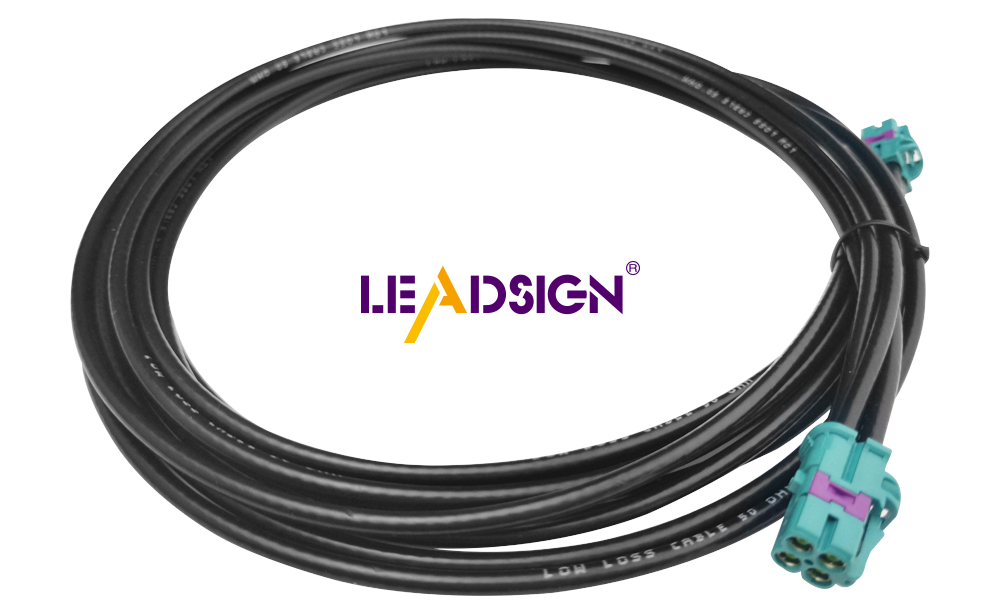Automotive Electrical Connectors Types for Easy Use

You need the right automotive electrical connectors types for good vehicle care. These connectors are important for reliable connections in cars. Without them, your car might break down and cost a lot to fix. Different types of automotive electrical connectors are made for certain uses, so choose carefully. Picking the right connectors helps your car work well and stay safe.
Understanding Automotive Electrical Connectors
Definition and Role
What are automotive electrical connectors?
Car electrical connectors are key parts of your car's electric system. They link wires, making sure electricity moves smoothly to car parts. These connectors have different shapes and sizes for special jobs. You can find them in the engine, dashboard, or headlights. Their main job is to make a strong connection so electricity doesn't stop.
Importance in vehicle systems.
In cars, these connectors are very important. They help all electronic parts work right. Without them, lights, radio, or engine might fail. Connectors keep these systems reliable by ensuring steady electricity flow. This reliability is crucial for safety and car performance. Picking the right ones stops costly fixes and keeps your car running well.
Common Applications
Where are these connectors typically used in vehicles?
You see these connectors in many car areas. They're often in the engine area connecting sensors and controls. Inside, they link dashboard tools and entertainment systems. In lights, they connect headlights and taillights. Each area needs connectors to work correctly.
Examples of systems relying on connectors.
Many car systems need these connectors. For example, the engine system uses them with sensors and controls. The entertainment system depends on them for sound and video signals. Safety features like airbags use them to work when needed. Knowing this helps you choose the best connectors for your car.
Automotive Electrical Connectors Types

Knowing about different automotive electrical connectors types helps you pick the right ones for your car. Each type is special and works best in certain places.
Blade Connectors
What they are and how to use them.
Blade connectors are flat metal pieces that fit into slots. You see them in car fuse boxes and where quick changes are needed. They are easy to put in and take out, so they’re good when parts need changing often.
Why blade connectors are good.
Blade connectors have many good points:
Easy to Use: You can connect or disconnect them without tools.
Useful Everywhere: They work in small gadgets and big car systems.
Trustworthy: They hold tight, stopping electric problems.
Pin Connectors
What they are and how to use them.
Pin connectors have pins that go into sockets. They're used in car wiring to link different electric parts. They help signals and power move well between parts.
Why pin connectors are good.
People like pin connectors because:
Safe Fit: Pins fit snugly, preventing loose connections.
Strong: They handle shakes and bumps in cars.
Flexible: Come in many shapes for different wires.
Butt Connectors
What they do and how to use them.
Butt connectors join two wires end-to-end for a smooth path. Use them when fixing or making wires longer. Often paired with heat shrink tubes for extra safety from wetness.
Why butt connectors are good.
Butt connectors give:
Solid Hold: When crimped right, they stay strong.
Extra Safety: Heat shrink adds protection from weather.
Simple Use: Easy to install, great for home fixes.
By learning about these connector types, you can pick the best one for your car jobs. Whether fixing something simple or doing big wiring work, choosing the right connector keeps your car’s electric system working well.
Picking the Best Connector
Things to Think About
How much power it can handle.
When picking car connectors, think about power needs. Each type handles a certain amount of electricity. If you use one that can't handle enough, it might get too hot and break. Always check if the connector can take your car's power load.
Weather and strength.
Weather matters when choosing connectors. Some like Deutsch are strong and resist bad weather. They come apart easily and stand up to washing, great for tough places. Weatherpak ones are used in regular cars. Think about where you'll use them and pick ones that protect against water, dust, and heat.
Matching and Fit
Making sure they match with old parts.
It's important that connectors match old parts in your car. OEM ones fit well with original car parts and have warranties. Aftermarket ones are cheaper but need to match your car specs to work right.
Why fitting right is key.
A good fit keeps connections working well. Loose fits can cause problems with electricity flow. Make sure connectors hold wires tightly for steady connections. This helps avoid electric issues and makes your car run better.
Using Automotive Electrical Connectors Easily
How to Install
Steps to put in connectors.
Putting in car connectors right makes them work well. Follow these steps:
Get Tools: Gather tools like wire cutters, crimpers, and heat shrink tubes.
Ready Wires: Take off the wire cover to show enough metal for a good link.
Pick Connector: Choose the right connector that fits your wire size.
Put Wires In: Insert bare wires into the connector snugly.
Crimp Tight: Use a crimper to hold wires tight in the connector.
Seal It Up: Slide heat shrink tube over and heat it to seal against water.
Mistakes not to make.
Avoid these mistakes for a good install:
Wrong Wire Cutting: Cutting too much or little weakens the link.
Wrong Connector Use: Wrong connectors can cause bad links and breaks.
Bad Crimping: Not crimping well leads to loose links and electric problems.
No Sealing Done: Not sealing with heat shrink leaves it open to damage.
Care and Fixing
Regular care tips.
Regular care keeps connectors working well. Do these things:
Look Often: Check for wear, rust, or harm on connectors.
Clean Well: Use cleaner spray to clear dirt from connector parts.
Use Grease: Put grease on connectors to keep away wetness and rust.
Check Fit Good: Make sure they stay tight for no electric trouble.
Spotting and fixing problems.
Find and fix problems fast to stop bigger issues:
Loose Links: If lights flicker or power stops, check for loose links and tighten them up.
Rust Signs: Green or white stuff shows rust; clean it and add grease protection.
Broken Wires Found? Look for cut or frayed wires; replace them so things work right again.
Expert Tip: "OEM connectors are approved by makers, keeping warranties safe. This saves money if aftermarket ones break things."
By doing this care, your car's electric system stays strong and works great.
Picking the right automotive electrical connectors is key for your car's safety and performance. Good connections make sure all systems work well, stopping expensive fixes. Knowing this helps your car last longer and run better.
Remember: OEM connectors are top quality because they meet maker standards. They keep warranties safe, giving you peace of mind. But aftermarket ones are cheaper, good for saving money.
Use this info to choose wisely and keep your car in top shape.
See Also
Understanding HSD Connectors Within Automotive Engineering
Benefits of HFM Connectors for Automotive Applications
Key Benefits of High-Speed FAKRA-Mini Connectors in Cars

